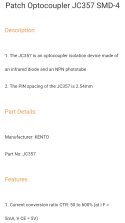AMEC has developed one successful etching equipment and thin film equipment after another, quickly entered the market, and provided highly competitive and cost-effective equipment products for customers of integrated circuits and pan-semiconductor micro devices, and continuously increased market share.
The company has accumulated more than 6,000 plasma and chemical film reaction tables, and has achieved mass production and large-scale repetitive sales on 137 production lines at home and abroad.
According to market and customer needs, the company has significantly increased its R&D efforts.
Currently, the company's research and development projects cover six categories and the development of more than 20 new equipment. The company's speed of developing new products has significantly accelerated. In the past, it usually took three to five years to develop a new equipment. Now it only takes two years or less to develop competitive new equipment and successfully enter the market. In 2024, the company's total R&D investment reached 2.45 billion yuan, an increase of 94.3% over 2023, accounting for about 27% of operating income, which is much higher than the average R&D investment of 10% to 15% of revenue of companies listed on the Science and Technology Innovation Board.
In 2024, the company achieved operating income of approximately 9.065 billion yuan, an increase of approximately 2.802 billion yuan from 2023.
On the basis of maintaining an average annual growth rate of operating income of more than 35% in the past 13 years and an average annual growth rate of operating income of more than 40% in the past four years, the company's operating income in 2024 increased by approximately 44.73% year-on-year. Among them, the revenue of etching equipment was approximately 7.277 billion yuan. On the basis of an average annual growth rate of more than 50% in the past four years, it increased by approximately 54.72% year-on-year in 2024. The company's comprehensive competitive advantages continued to be strengthened and improved, and the KPI indicators of various operations have been comparable to the international advanced level, and even exceeded the level of international leading semiconductor equipment companies in key indicators such as on-time delivery and defects per unit. AMEC focused on improving labor productivity. On the basis of achieving per capita sales of 3.5 million yuan in 2022, per capita sales exceeded 4 million yuan in 2024, reaching the international advanced level of the equipment industry.
Dr. Yin Zhiyao shared that
AMEC is currently developing a more competitive new generation of high-energy CCP plasma etching equipment, a new generation of ICP low-energy plasma etching equipment, wafer edge etching equipment, a new generation of plasma source PECVD equipment, LPCVD and ALD thin film equipment, epitaxial EPI equipment and electron beam quantity detection equipment for integrated circuit micro-manufacturing. In recent years, with the rapid development of the advanced packaging market, AMEC's product layout for advanced packaging has also shifted from CCP plasma etching equipment and TSV deep silicon etching equipment that have entered the production line in batches to the development of PVD, CVD and quantity detection equipment, etc., to provide customers with comprehensive solutions. AMEC has also been continuously deploying the pan-semiconductor micro-manufacturing field for more than a decade, including the manufacture of gallium nitride-based light-emitting diodes, MOCVD equipment for Mini-LED and Micro-LED, and MOCVD equipment for the manufacture of silicon carbide and gallium nitride power devices. AMEC decided to develop large flat-panel equipment at the end of 2023 to fill the gap in this field in China as soon as possible. These include core thin film and plasma etching equipment required in the field of new display technology, and have made much progress ahead of schedule.
The new 180,000 square meter R&D and production base built by AMEC in Shanghai Lingang New Area will achieve an annual output value of RMB 8.5 billion in 2024, the first year of mass production. The 140,000 square meter production and R&D base built by Nanchang AMEC in the High-tech Zone will reach an annual output value of RMB 6.1 billion in 2024. AMEC's 100,000 square meter headquarters twin tower building will be completed in Dishui Lake, Lingang by the end of this year. With the rapid expansion of product lines, in order to get closer to customers,
AMEC plans to build production and R&D bases in Zengcheng District, Guangzhou and Chengdu High-tech Zone to ensure that there are enough factories in the next ten years to meet the needs of many new product development and rapid growth in production capacity.




